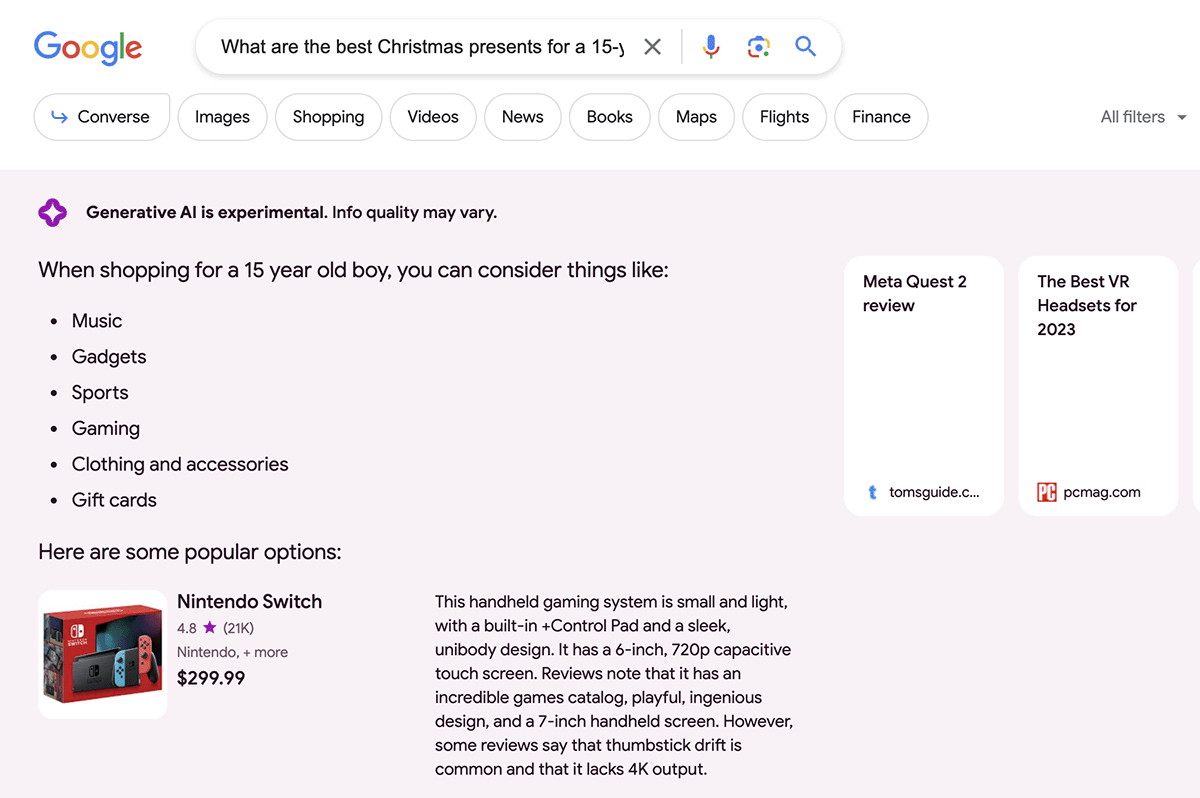8 Must-Know Trends For Retailers in the 2023 Holiday Shopping Season
The holiday season is more than just a time of joy and celebration; it’s also a critical period for retailers and consumers alike. As we approach the much-anticipated 2023 holiday shopping festival, a slew of trends and forecasts are set to shape the way we shop, gift, and celebrate. In the wake of evolving consumer behaviors, economic fluctuations, and technological advancements, this year’s holiday shopping experience promises to be unlike any other.
In this article, we will delve into eight outstanding trends and forecasts that will define the 2023 holiday shopping season. From the changing dynamics of spending habits to the transformative impact of artificial intelligence, these insights will provide both retailers and shoppers with valuable guidance on how to navigate and make the most of this festive retail extravaganza. So, let’s unwrap the future of holiday shopping and discover what awaits us in this exciting season.
To have a successful sales season, retailers need to check out the trends for this holiday shopping season:
- 1. Holiday spending will increase less
- 2. Shopping events are commencing earlier than ever before
- 3. The importance of allowing returns
- 4. Buy now, pay later
- 5. Discounts boost sales
- 6. Artificial Intelligence will impact sales
- 7. “Buy Online, Pickup in Store” will drive increased in-store purchases
- 8. Economic uncertainty entails practicing prudent spending habits
1. Holiday spending will increase less
As we step into the holiday season of 2023, the economic landscape remains shrouded in uncertainty. A significant portion of the American population finds themselves grappling with concerns over inflation and the looming specter of economic downturns. In such an environment, consumers worldwide are expected to exercise newfound caution, placing an unprecedented emphasis on frugality and cost-saving measures. This shifting mindset hints at a potentially modest trajectory for holiday spending, as individuals and families alike seek to navigate the precarious financial terrain. This shift indicates that consumers may be adopting a more cautious approach to their holiday budgets. Retailers should keep this in mind when planning their inventory and promotions to cater to cost-conscious shoppers.
2. Shopping events are commencing earlier than ever before
The retail landscape in 2022 has ushered in a significant shift in shopping behavior. No longer confined to the traditional holiday season of November and December, major retailers have redefined the calendar for shopping extravaganzas, with big shopping events launching earlier than ever before. This approach not only targets early-bird shoppers but also helps to alleviate the intensity of the traditional holiday rush, providing a more seamless and enjoyable shopping experience for consumers.
According to a survey conducted by Google, by mid-October, shoppers across the globe had already completed approximately 21% of their holiday shopping. This early surge in consumer activity signals a need for retailers to adopt a strategic, “always-on” marketing approach to capture and retain customer attention.
3. The importance of allowing returns
In the realm of modern consumerism, the significance of accommodating returns cannot be overstated, particularly during the holiday season. As discerning shoppers meticulously plan their festive purchases, they are increasingly drawn to retailers who proffer seamless and lenient return policies. This strategic approach is far from a mere formality; it stands as a linchpin in earning the unwavering trust and loyalty of customers.
The allure of convenient and hassle-free returns often serves as a pivotal determinant in the shopping choices of consumers during the festive period. The knowledge that they can effortlessly rectify any mismatches or concerns post-purchase imparts a sense of security, influencing their decision on where to make their holiday investments. Retailers who grasp the profound importance of this customer-centric philosophy position themselves not just as businesses but as trusted partners in the consumer’s holiday journey.

Read more: 15+ Best Shopify Returns Process Apps
4. Buy now, pay later
In the ever-evolving landscape of retail, the “Buy Now, Pay Later” (BNPL) trend has emerged as a powerful force, steadily gaining momentum. It empowers consumers with the unprecedented flexibility to acquire desired items without the immediate burden of full payment, redefining the art of purchasing. Beyond its inherent convenience, this innovative financing option has the potential to substantially amplify sales, rendering high-ticket products more accessible to a broader audience.
Forward-thinking retailers are well-advised to consider the strategic integration of BNPL offerings into their payment methods. By doing so, they not only align with the evolving preferences of modern shoppers but also unlock the potential to tap into an expansive and diverse customer base. In embracing BNPL, retailers embark on a journey of adaptation and empowerment, navigating the waves of change to secure their place at the forefront of the retail revolution.

5. Discounts boost sales
In the ever-evolving realm of holiday retail, certain truths stand unwavering. Among these, the undeniable prowess of discounts reigns supreme. Discerning shoppers, driven by a quest for value, eagerly scour the market for enticing deals, making discounts a perennial magnet for consumer attention. It is during the holiday season that this magnetic force exerts its most potent influence, culminating in a surge of sales that can redefine the fortunes of retailers.
For businesses, the path to holiday success lies in the meticulous crafting of a well-planned discount strategy. This strategy serves as a transformative catalyst, enabling retailers to navigate the intricate dance of consumer demand and competition. In embracing the art of discounts, retailers hold the key to not just capturing market share but also cementing their status as industry leaders, illuminating the way forward in an ever-evolving retail landscape.
6. Artificial Intelligence will impact sales
The retail industry remains under the profound influence of Artificial Intelligence (AI), with the forthcoming holiday season proving no exception. The integration of AI-driven capabilities such as personalized recommendations, chatbots, and predictive analytics has the power to significantly augment the shopping experience and, in turn, catalyze sales growth. As the retail landscape continues to evolve at an unprecedented pace, it is incumbent upon retailers to recognize the pivotal role of AI technology and invest strategically in its implementation. By doing so, they not only stay relevant but also position themselves as trailblazers, setting the standard for excellence in an industry increasingly defined by innovation and customer-centricity.

7. “Buy Online, Pickup in Store” will drive increased in-store purchases
The retail landscape has witnessed a significant transformation with the rise of “Buy Online, Pick Up In-Store” (BOPIS) as a favored shopping method. This customer-centric approach not only offers unparalleled convenience but also serves as a strategic catalyst for driving foot traffic to brick-and-mortar establishments.
In the pursuit of retail excellence, it is imperative for retailers to dedicate themselves to the meticulous optimization of their BOPIS processes. By doing so, they empower their customers to seamlessly navigate this hybrid shopping experience, ensuring that it becomes a harmonious fusion of digital convenience and the tactile allure of physical stores. In embracing this evolution, retailers unlock the potential to not merely meet but exceed the expectations of a discerning customer base, thereby solidifying their position as leaders in the dynamic and ever-evolving world of retail.
8. Economic uncertainty entails practicing prudent spending habits
In the ever-shifting landscape of global economics, influenced by multifarious factors, consumers may find themselves inclined toward a more cautious stance when it comes to their holiday expenditures. This proclivity necessitates a strategic response from retailers, one that aligns with the needs and aspirations of budget-conscious shoppers.
Retailers, poised at the intersection of commerce and consumer demand, should prepare themselves to meet this challenge by curating a selection of value-driven products. Furthermore, they must emphasize not only the intrinsic quality of their offerings but also their affordability, thus presenting an enticing proposition for those who seek to make prudent choices amidst uncertain economic tides.
By embracing this paradigm shift and adapting to the changing needs of their clientele, retailers not only fortify their resilience in the face of economic fluctuations but also position themselves as discerning purveyors of value and quality in the competitive arena of holiday retail.
Conclusion
In conclusion, the 2023 holiday shopping festival is poised to be an exciting yet challenging time for both consumers and retailers. Understanding these eight outstanding trends and forecasts can help businesses adapt and thrive during this festive season. By staying attuned to shifting consumer behaviors and leveraging technology and strategic planning, retailers can make the most of this holiday shopping extravaganza. Whether it’s through early promotions, convenient returns, or innovative AI solutions, retailers have numerous opportunities to make this holiday season a success.








